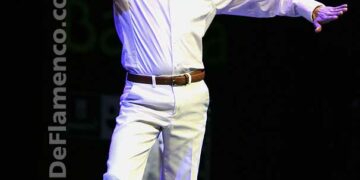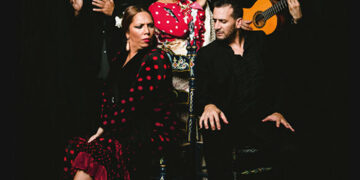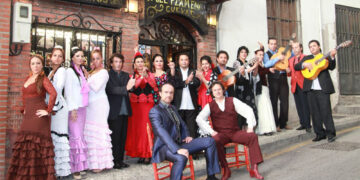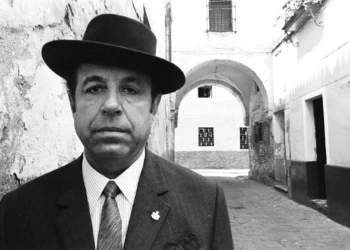|
8th Festival de Otoño de Granada
|
||||
|
Son de la Frontera are: Raúl Rodríguez, Cuban tres flamenco guitar. Paco de Amparo, flamenco guitar. Pepe Torres, dance and rhythm. Moi de Morón, cante and rhythm. Manuel Flores, rhythm and dance. VOYAGE TO THE FRONTIER The powerful dancing of Pepe Torres, the metallic sound of Raúl Rodríguez’ Cuban tres, the Morón guitar of Paco de Amparo, the husky voice of Moi de Morón and the rhythm of Manuel Flores all add up to the impact that begins the show “Cal” of Son de la Frontera, one of the few flamenco groups that has managed to find the key to success with a wise mixture of life experience, boundless love for the art and good taste. Recently nominated for the Latin Grammies, and with important performances under their belts as well as others soon to take place, these young men are the most dramatic proof that traditional flamenco forms have a special communicative power that continues to fascinate audiences of all ages and nationalities. In actual fact, the great majority of those who went to the Isabel la Católica theater to hear the group in their maiden Granada performance, were stingy with the first applause, and it looked like it was going to be a hard night for the musicians. But the chemistry began to take effect with the insistent sound of the tres that backs up each number, sounding alternately Caribbean, oriental or carnivalesque. Familiar music sounds fresh and exotic, no contemporary harmony alleviates the dense rustic force of a type of flamenco defended by Diego del Gastor whose music inspires this group. It’s like a parallel musical universe in which everything sounds like you heard it before, but differently. Perhaps that is the ideal function of all art: to evoke the familiar via the unfamiliar. The “frontier”.
The evocation of times past claiming their perfect relevance in today’s world. Without a doubt, jazzman Ornette Coleman was mistaken when he said jazz is the only musical genre in which you can play the same note night after night, and it sounds different each time, because in the right hands, flamenco has that capacity. And better hands than those of Son de la Frontera would be hard to find. Formed in family fiestas, with the rhythms of the most traditional sort of flamenco counselling every moment and an Andalusian perspective which is at the same time open to the world, their product is frankly irresisitible, in the most literal sense. The sweet retro sound of alegrías played in A position, modulates to C for Moi de Morón to sing cantiñas of Pinini. Knowledge and experience. The evocation of times past claiming their perfect relevance in today’s world. Bulerías in A minor, another delicacy cultivated by Tío Diego. Traditional variations that smell and taste of Morón emanate from the underestimated guitar of Paco de Amparo, and Raúl speaks: “We’re here to do the flamenco we learned from our families and which is inside of us”
An old-style rumba, from before the Catalonian revolution that would come with Pescaílla and Peret, tremendous energy in an assortment of bulerías, the flamenco elegance of Pepe Torres and the surreal magic of Manolo Flores, the yin and yang of one and the same art, the audience begs for more and Diego del Gastor smiles down from flamenco heaven.
|



























